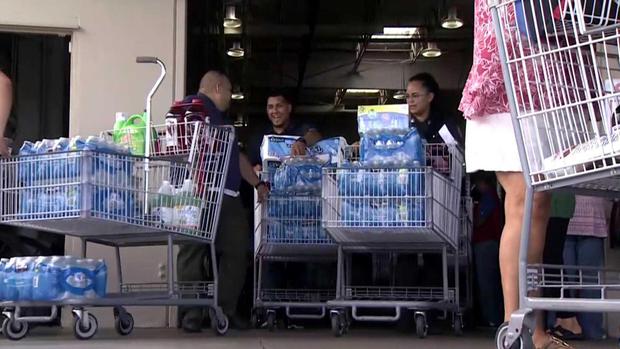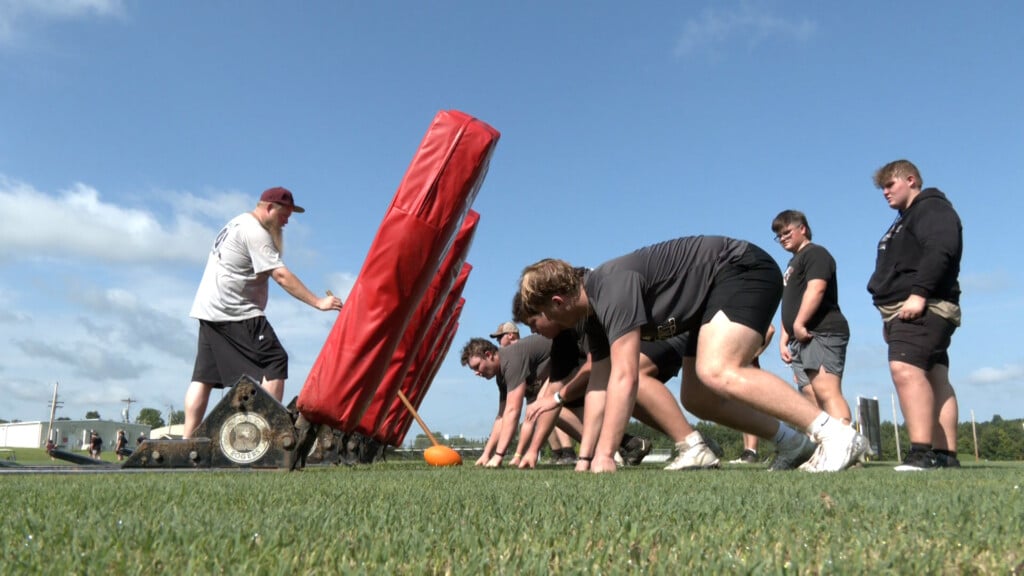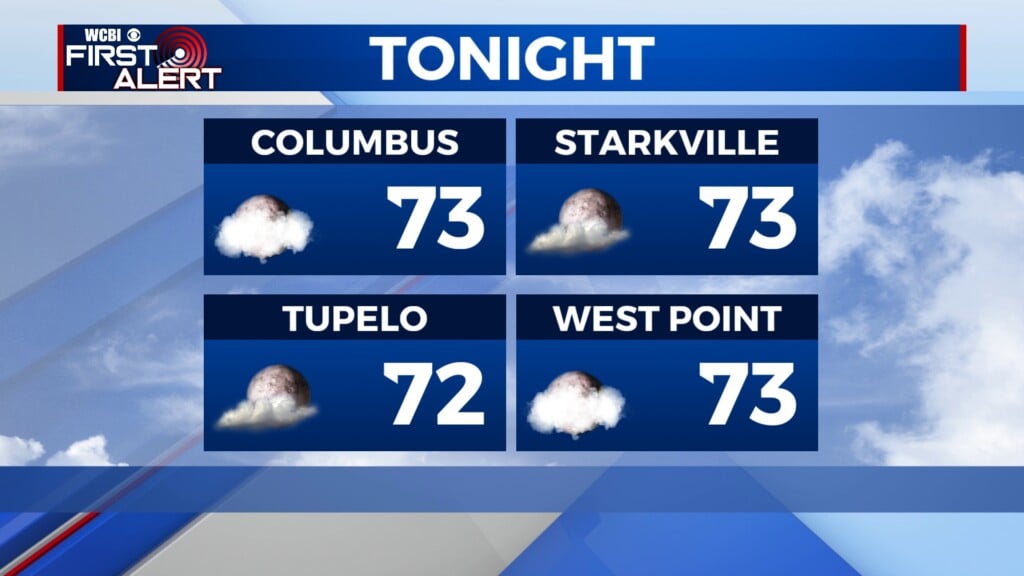Dorian strengthens into hurricane as Puerto Rico avoids direct hit
Dorian strengthened into a Category 1 hurricane Wednesday afternoon as it made its way through the Caribbean. Puerto Rico, which was put under a state of emergency Tuesday night, would be spared from a direct hit, CBS News weather producer David Parkinson reported.
Dorian made landfall in the U.S. Virgin Islands, Parkinson reported. Rainfall amounts of 4 to 6 inches were expected, with 10 inches in some places.
The hurricane was expected to strengthen on a path for Florida’s Atlantic coast. The storm could make landfall in the U.S. as a Category 3 storm.
Trending News
As of 1:44 p.m. EDT Wednesday, Dorian was packing 75 mph sustained winds. Its center was over St. Thomas, one of the U.S. Virgin Islands, and it was moving northwest at 13 mph, the National Hurricane Center said. Tropical-storm-force winds extended outward up to 80 miles from the center.
80-year-old man dies in Bayamón
Puerto Rican police said an 80-year-old man died in Bayamón on Wednesday as he made preparations ahead of the storm, the Associated Press reported. The victim fell from the roof of his home after attempting to clear debris off of it.
Watches and warnings in effect
A summary of watches and warnings in effect, via the National Hurricane Center.
- Hurricane warning: Puerto Rican islands of Vieques and Culebra, U.S. Virgin Islands, British Virgin Islands
- Hurricane watch: Puerto Rico
- Tropical storm warning: Puerto Rico
The hurricane warning means hurricane conditions are expected within 12 hours. The hurricane watch means hurricane conditions are possible within 12 hours.
The tropical storm warning means tropical storm conditions are expected within 12 hours.
Dorian could strengthen into a major hurricane
Dorian has thrown forecasters a few curve balls over the past day, the biggest of which was a large shift to the east. While that is good news for Puerto Rico, it is a bad sign for the U.S. East Coast.
The reason the storm has shifted is because its circulation has been rather disorganized and big convective bursts (clusters of thunderstorms) on the east side of the circulation are making the system lopsided, pulling and tugging the center further east.
This means Dorian will avoid the beating it would have taken if the system had passed over the high mountains of Puerto Rico and the Dominican Republic. Instead, it will emerge north of the islands Wednesday night as a healthy storm system. That healthy system can then more easily intensify as it moves north.
Knowing this, the next question is: Will the system enter an environment favorable for intensification? Increasingly, the answer seems to be yes.
— Jeff Berardelli
FEMA official: “We’re much better prepared”
The Federal Emergency Management Agency told CBS News the agency is better prepared for Dorian than it was two years ago for Hurricane Maria. The federal government has sent 500 employees to Puerto Rico in addition to the 3,000 they had already sent.
CBS News asked Nick Russo, FEMA’s Puerto Rico field leader, what gave him the confidence that the agency was better prepared now. “The amount of supplies we have,” he said. “There’s probably 10 times the commodities on the island that were here pre-Maria, so we’ve spent the last two years learning some lessons and making sure that we’re much better prepared.”
Puerto Rico Electric Power Authority CEO José Ortiz made the bold prediction that if the power were to fail on the island, he would have the lights back on in two weeks. “We have to restore as quick as possible,” Ortiz said. “It’s not acceptable what happened the last time. Many people wait for 11 months to get power back. Imagine if it was your family, so it’s going to be different.”
FEMA brought in 100 satellite phones to give to every mayor on the island, and they were activated Wednesday morning.
— David Begnaud reports from San Juan, Puerto Rico
Trump approves Puerto Rico emergency declaration
The White House announced late Tuesday that President Trump has approved an emergency declaration for Puerto Rico, allowing federal assistance to help local response efforts stemming from Dorian.The office of the press secretary released the following statement:
Today, President Donald J. Trump declared that an emergency exists in the Commonwealth of Puerto Rico and ordered Federal assistance to supplement commonwealth and local response efforts due to the emergency conditions resulting from Tropical Storm Dorian beginning on August 26, 2019, and continuing.
The President’s action authorizes the Department of Homeland Security, Federal Emergency Management Agency (FEMA), to coordinate all disaster relief efforts which have the purpose of alleviating the hardship and suffering caused by the emergency on the local population, and to provide appropriate assistance for required emergency measures, authorized under Title V of the Stafford Act, to save lives and to protect property and public health and safety, and to lessen or avert the threat of a catastrophe in all 78 municipalities in the Commonwealth of Puerto Rico.
Specifically, FEMA is authorized to identify, mobilize, and provide at its discretion, equipment and resources necessary to alleviate the impacts of the emergency. Emergency protective measures, limited to direct federal assistance, will be provided at 75 percent Federal funding.
Puerto Rico residents still on edge after Maria
Puerto Rico residents are still dealing with post traumatic stress from Hurricane Maria, which ravaged the island two years ago. Ahead of Dorian, some people are leaving. “I’m so insecure here with the power, the food, the security — so I’m leaving,” one person told CBS News.
Those who are staying and preparing are wondering if the government is prepared, too. CBS News spoke with Nick Russo, who leads the Federal Emergency Management Agency’s effort in Puerto Rico.
“The biggest problem last was when they lost the power they lost water. So one of the biggest things we’re preparing for is the support of PREPA (Puerto Rico Electric Power Authority) if we have a power outage. Right now, we don’t know,” Russo said. “We spent the last two years learning some lessons and making sure we’re much better prepared.”
Before Hurricane Maria, the island had $21 million of inventory to replace downed power lines and restore electricity. The governor now said they have $141 million. But 30,000 homes are still covered in tarp and 1,000 roads remain impassable.
— David Begnaud reports from San Juan, Puerto Rico
Florida search and rescue team heading to Puerto Rico
Miami-Dade Fire Rescue is sending a 45-member team Puerto Rico before the storm reaches the island. The team is traveling to San Juan on Tuesday and will be on standby for rescue operations.
Andy Alvarez of Miami Dade Fire Rescue said the team should have an advantage because they spent time on the island after Hurricane Maria hit in 2017. “We know the terrain, we know the main streets, thoroughfares to get around because we used them already, we have the contacts for the fuel,” he told CBS Miami.
Florida governor urges residents to prepare
Florida Governor Ron DeSantis is urging residents to prepare before heavy rain hits the state. Local meteorologists are predicting 6-8 inches of rain in several areas this weekend as the storm approaches the Florida coast.
“Based on the current track of [Dorian], all residents on the East Coast should prepare for impacts, including strong winds, heavy rain and flooding,” DeSantis tweeted Tuesday. “Make sure to have your supplies ready and follow @FLSERT and local media for the latest updates on the forecast.”
Tropical Storm Erin weakens to a depression
A tropical depression off the southeast U.S. coast, dubbed Erin by forecasters, strengthened into a tropical storm early Wednesday before weakening back to a depression later in the day.
As of 11 a.m. EDT Wednesday, Erin’s center was approximately 470 miles west-northwest of Bermuda and 190 miles southeast of Cape Hatteras, North Carolina, the National Hurricane Center reported. The storm was moving north-northwest at 13 mph with maximum sustained winds of 35 mph. It’s expected to move north and northeast out over the open Atlantic.






Leave a Reply